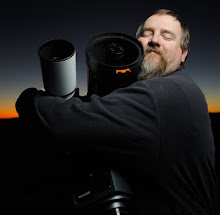12 May 2006. One frame every five minutes. The moon is Europa.
Sunday, July 02, 2006
Saturday, July 01, 2006
Review: Eclipse Makview 4

I've been spending a lot of time doing planetary observation and photography, so when I got the chance to review an Eclipse Makview4 Maksutov-Cassegrain from AGENA AstroProducts, I jumped at it. Maks enjoy a reputation as excellent planetary scopes with their long focal length and performance approaching apochromatic refractors of the same aperture.


The Eclipse Makview 4 is a 105 mm, f/13 (1365 mm focal length) Maksutov-Cassegrain telescope featuring BK7 glass optics. The manufacturer claims a wavefront of 1/5 wave (corresponding to a surface accuracy of 1/10 wave) or better. Superficially, the scope resembles the well-known Meade ETX-series OTA with a plastic rear housing containing a built-in flip mirror and eyepiece holder.

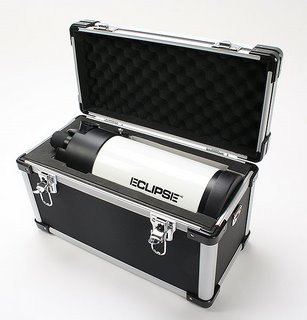
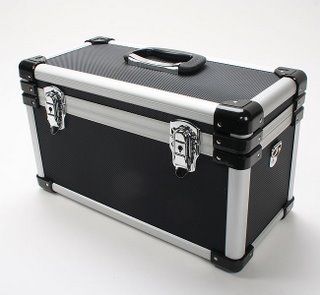
The scope arrived nicely packed in an aluminum carrying case. Inside, the scope, finder and two eyepieces ride in custom-cut dense foam. That said, I did encounter a couple of issues. The lack of foam at the objective end makes this a carrying case and not a shipping case, since any shock can be transmitted to the tube. The other thing I noticed right away is that the finder must be removed from the mount, and the mount completely disassembled to fit the cutouts. That means re-aligning the finder from scratch every time you take the scope out. For me, that's enough hassle to make me want to skip the case, which is a shame. It looks like the foam is deep enough to re-engineer this, however.

With the scope out of the case, I proceeded to mount it to my equatorial mount by attaching a dovetail bar to the 3/8-16 and a 1/4-20 thread mounting socket. From there, I attached the 6x30 finder to its bracket, and then to the scope. The finder bracket uses two sets of three screws, which I find harder to adjust than the o-ring/spring-loaded pin system other manufacturers use. In addition, the metal mounting screws dinged up the finder scope while I was using it. To top things off, there's no way to adjust the focus on the cheap-feeling finder scope.
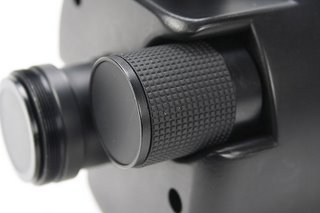
Before I ever inserted an eyepiece, I ran the focuser through its range. The movement was very smooth, and the large, rubber-gripped knob comfortable in my hand. Alongside the focuser at the rear of the scope is the lever controlling the internal flip-mirror and t-threaded eyepiece holder. There's a simple 1.25-inch plug in the rear, which leaves the t-threads exposed. I would have preferred a screw-on cap to protect them from the inevitable damage. The combination of the flip mirror and threaded connector is a nice touch, allowing you to easily switch between an attached camera and eyepiece.

Overall, the fit and finish of the telescope is fine. The coatings on the objective appeared smooth and even. The primary mirror was clean and appeared well-polished. My sample did have a small blemish in the paint on one side of the tube.
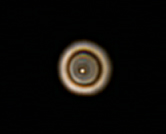
You don't buy a telescope to look at though, you buy a telescope to look through. I inserted the supplied 20-mm eyepiece and pointed the scope at Jupiter. Sadly, that's where I encountered the Makview 4's most glaring faults. The very first thing I saw when I put my eye to the eyepiece was an out of center donut, indicating that the optics of the scope were misaligned. The next thing that happened is that the donut moved from one side of the field of view to the other when I turned the focus knob. I own two other cassegrain telescopes--a Meade ETX-90 and a 10-inch LX200, and neither of them exhibit nearly the amount of mirror shift when focusing that the Eclipse unit does. I suspected the flip mirror might be contributing to the non-concentric diffraction rings I was seeing, so I bypassed it by attaching a 1.25" diagonal to the rear port, but saw a very similar pattern, leading me to believe the scope truly is out of collimation.
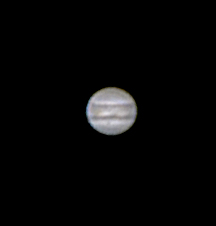
Despite the somewhat misaligned optics, the planetary views were pleasing. Using a 13-mm Nagler Type 6 eyepiece, Jupiter's equatorial belts and temperate zones were visible, along with a darkening at the poles. The Great Red Spot could be made out, but it didn't exhibit much redness. I wasn't able to make out Red Jr., but I didn't expect to, either. Saturn was getting pretty low by mid-May, but I could still view the two equatorial bands on the planet and the Cassini Division in the rings. The three-day old moon looked very nice, with lots of detail and contrast in the Nagler and a 22-mm Lanthanum Superwide. As for deep space objects, well, it is a four-inch telescope. The globular cluster M13 was unremarkable and unresolved in the small aperture from my moderately light-polluted suburban back yard.
The unit I reviewed included two generic Plössl eyepieces, but I'm not commenting on them as they are due to be replaced by higher-quality eyepieces.
I'm disappointed overall. I really wanted to like this telescope, but the out of collimation (and not easily adjusted) optics coupled with the large amount of mirror shift made viewing more difficult than it should be. While the views were nice, I couldn't help this nagging feeling that I wasn't seeing the best that the scope had to offer. I also found the US$375 OTA-only price a bit high for the overall quality, especially considering the competition's similar scope priced only $35 more including an EQ-2 mount.
Eclipse Makview 4, www.agenaastro.com
This review is also available as a PDF file.
Subscribe to:
Posts (Atom)


